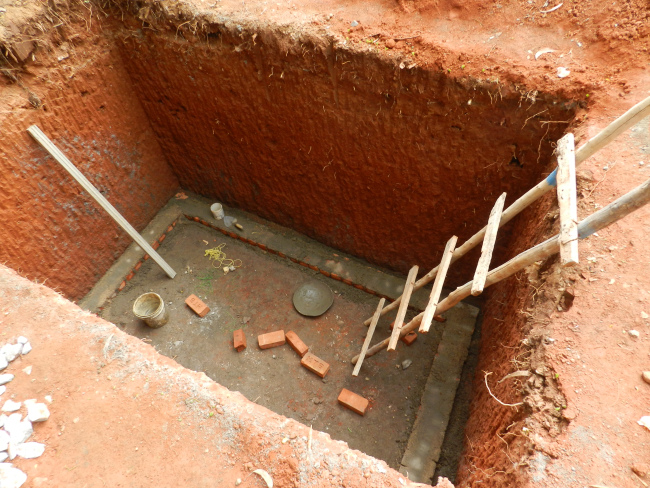Difference between revisions of "Sump tank"
| Line 1: | Line 1: | ||
[[Image:sump storage tank.jpg|thumb|right|200px|A sump tank under construction – Every building in Bangalore has one. Source: [http://rainwaterharvesting.wordpress.com/2013/10/31/on-the-sump-tanks-of-bangalore/ On the sump tanks of Bangalore]]] | [[Image:sump storage tank.jpg|thumb|right|200px|A sump tank under construction – Every building in Bangalore has one. Source: [http://rainwaterharvesting.wordpress.com/2013/10/31/on-the-sump-tanks-of-bangalore/ On the sump tanks of Bangalore]]] | ||
| + | [[Image:sump tank 2.jpg|thumb|right|200px|Source: [http://www.rainwaterharvesting.org/Urban/Components.htm rainwaterharvesting.org]]] | ||
===Bangalore example=== | ===Bangalore example=== | ||
Revision as of 00:09, 29 November 2014


Bangalore example
In Bangalore, water will be purchased from private water tankers and stored to be used for construction. One estimate says there a million sumps in the city alone with an average capacity of 6000 litres. This means that the water storage capacity created is a staggering 6000 million litres. Remember that the city gets in about 1000 million litres every day. Added to the fact that there is about 1000 million litres stored in overhead tanks the water storage by the city far outstrips that created by the utility.
Once the construction is completed the very same sump tank will be used to store the intermittent supply from the water utility. From here a pump will send it to the overhead tank to be reticulated by gravity to all the water points in the building.
Usually the sump tank is located in the North East corner of the site, especially for those who believe in Vaastu. The overhead tank is located in the South West for that is supposed to be the highest point of a building. Beliefs aside there are many technical things that should be carefully thought through to ensure that the sump delivers efficiently what it is supposed to.
The sump should be based on firm earth and with a good bed concrete. If the soil below is clayey or non-homogeneous it is better to build a RCC raft slab below. The side walls should not be compromised on and should be with good brick work using a nine inch wall. Alternately concrete blocks or hollow concrete blocks of good quality can be used. In high water table areas or areas of loose soil both sides of the wall should be plastered. The inside of the sump tank wall should be plastered with a waterproof compound on a wire mesh base. This will ensure that the sump tank does not leak. After it is built the tank should be filled with water and checked that there is no leak. Any leak should be detected and fixed immediately.
Sump tanks are extremely unsafe spots on a site especially for children of construction workers and for others. They should immediately have a cover slab cast with an inspection cover securely locked. The sump cover should be rust proof. Aluminum covers are now available which are excellent.
The other things to remember are to use a submersible pump which is energy efficient. The submersible pump will save space being inside the sump. The pipeline from the sump to the overhead tank should be as straight as possible and with as few bends as possible. PVC or GI pipes of the right gauge and size should be used.
A ball valve regulates the water intake into the sump. This should be of good quality and should function effectively. In Bangalore the sump can also double up as a rainwater harvesting structure thus being multi-purpose in use. During the rains rainwater and during the non-rainy season water from other sources can be stored.
While digging in most places in the city good red earth will be obtained. This can be used for gardening and even for the making of earth blocks for the building.
An annual cleaning and maintenance is recommended preferably without wasting the water inside it. During summer and during water borne disease outbreaks it is best to dose the sump water with bleaching powder and to measure the residual chlorine as 2 mg per litre after about 4 hours of the dosing. This will keep waterborne infections like cholera at bay.
Even though hidden from view the sump tank has an important role to play in the use of a building. A good design and maintenance will help extend its life and for it to perform optimally. In this understanding lies water wisdom.
Manuals, videos and links
Acknowledgements
- On the sump tanks of Bangalore. October 31, 2013.
